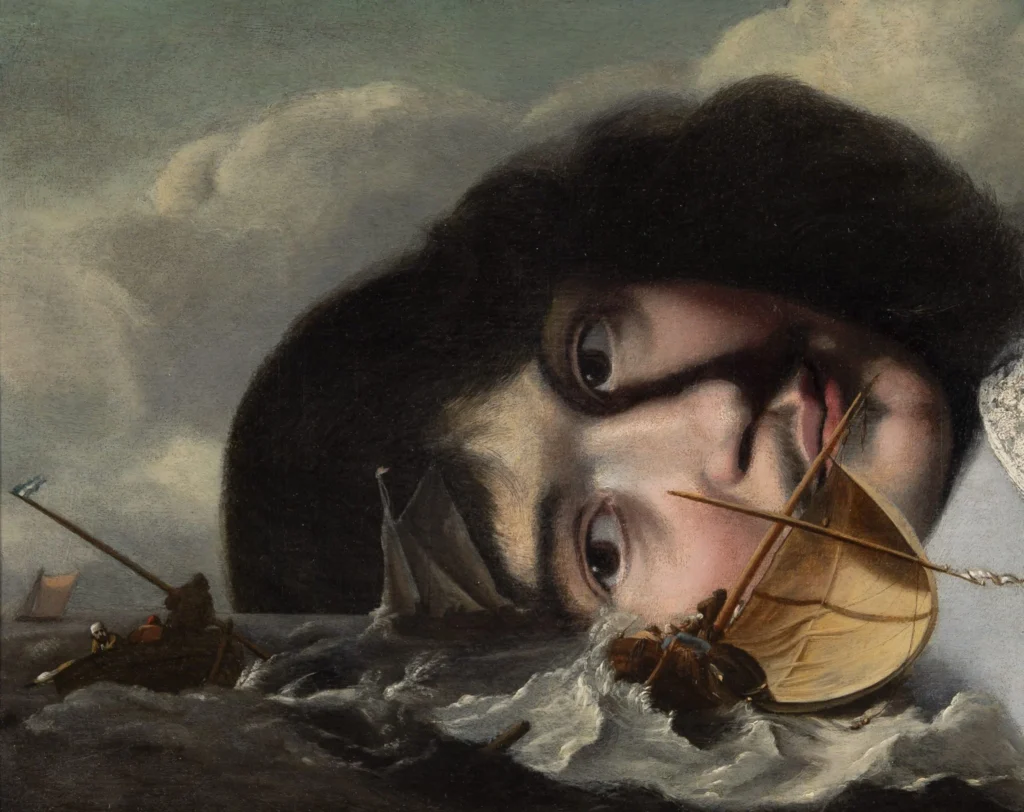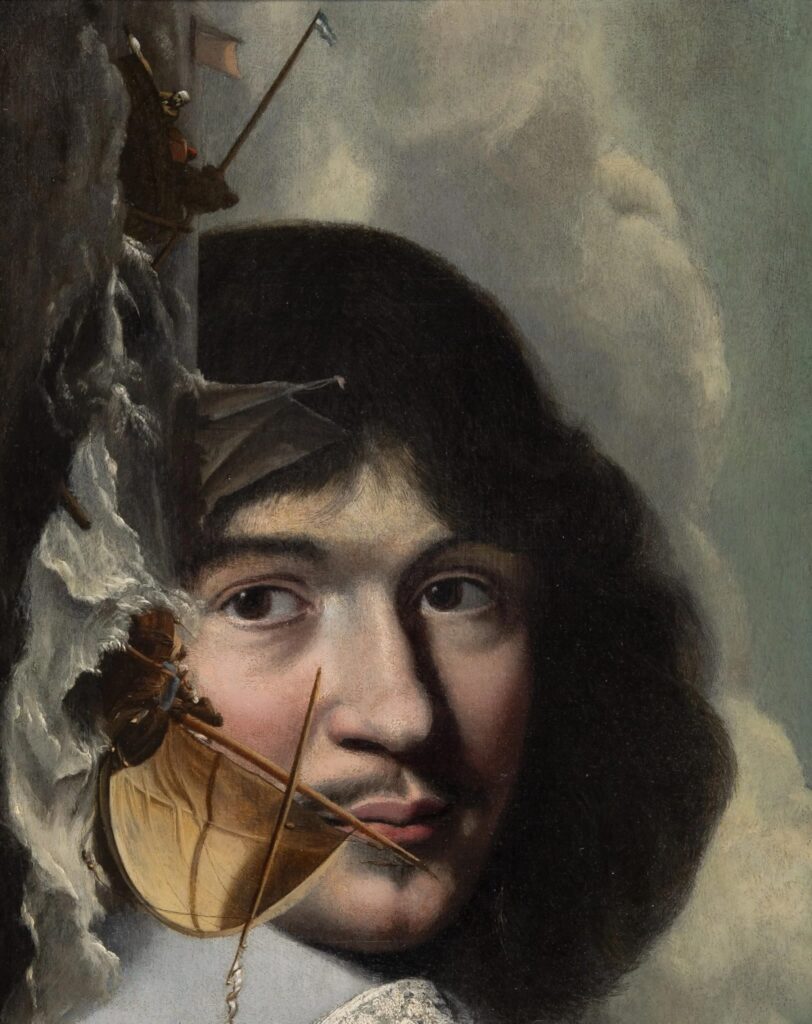Just WTEFAF? Look at this thing.

Let’s stipulate that it is wild that objects survive for hundreds of years, so each one is a little miracle and marvel of its own. But how did this painting come to be, and how did it come to be in Simon Dickinson‘s booth at TEFAF?
At least I can understand how it showed up in front of me: artnet published a TEFAF highlights roundup, which pwlanier posted on tumblr. Tracking it down beyond that only turns up Dickinson’s press release, some instagram shoutouts, and a brief youtube video of Dickinson son Milo discussing the painting.
Basically, it’s a 17th century Dutch seascape painted over a slightly earlier 17th century Dutch portrait of an unidentified man. As artnet reports, the head was only uncovered after a recent cleaning. So for centuries, the painting had looked like a regular, little seascape, c. 1685-1690, which Dickinson attributes to Ludolf Backhuysen, Amsterdam’s leading marine painter at the time.
The cleaning also apparently revealed the seascape painter’s meticulous, intentional preservation of the portrait—which Dickinson attributes to Isaack Luttichuys, with a date of 1655-1660.

I do not have the connoisseurial chops to raise any issue with the Dickinsons’ attributions; for what it’s worth—nothing—they look solid to me. Backhuysen was already a leading painter by 1665, receiving commissions from local burghers and studio visits from foreign kings. He was not scrimping, scavenging for a used panel to paint on in 1685. Luttichuys, a generation older, was well-known in Amsterdam as a portraitist, and he died well-known in 1673, presumably content in the belief that this and his many other portraits would survive him.
In Judith Benhamou’s video, Milo mentions that this surreal composition is exceptional, but that they’d seen some things like it, or kind of similar to it. And I guess it’s true that overpainting is extremely common in the history of paintings: fig leaves get added, draperies get touched up, windows get painted out. But reading through the 1995 catalogue of the National Gallery’s 17th Century Dutch painting [pdf], overpainting is equated with chasing fashion or botched restoration; it’s a scourge to be obliterated on the way back to a painting’s earlier, more authentic state.
And that is very clearly not what Backhuysen was up to when he painted on top of Luttichuys’s head, turning it into a darkened storm cloud that hovers over four civilian boats. Was it perhaps a philosophical gesture? A reference to the giant on the frontispiece of Hobbes’ Leviathan [published in Latin in 1668]? Did it relate to the war in which William III of Orange set sail to seize the English throne from James, his father-in-law?
I guess I’m fine with not being able to know for sure. But I do wonder why we have to rely on the serendipity and close reading of a single gallery to discover incredible objects like this. I mean, TEFAF is good at surfacing rarities and lost masterpieces, but it still feels hermetic and almost random. What else are we missing?
